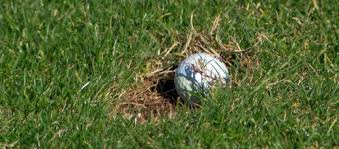First, you didn’t answer the question I posed, do you think the Rules of Golf should ensure that your result is directly commensurate with the quality of the shot you hit? You seem to want that for a shot in the fairway, does it apply elsewhere too?
But more generically, rules aren’t written for individual scenarios, you can always find a way to make any rule look unfair. But to directly answer your question, yes, that’s rub of the green. Not fair necessarily, but neither life nor golf is always fair.
Historically, putting greens have always been treated as “special places”, and that treatment has become more pronounced as the condition of greens has improved. Water, chemicals, knowledge, grass varieties, and equipment have all changed over the years, and green conditions have consistently become better. The changes allowing repair of any defect on the green is a response to those improvements, we expect more perfection on the green. I actually responded to the Rule survey in 2018 opposing that change, but it really hasn’t had a significant effect, in my experience.

